How can I trigger a change event on a jQuery UI slider?
I thought it would be
$('#slider').trigger('slidechange');
but that does nothing.
Full example script follows:
<link href="http://jqueryui.com/latest/themes/base/ui.all.css" rel="stylesheet" type="text/css">
<script src="http://ajax.googleapis.com/ajax/libs/jquery/1.3.2/jquery.js" type="text/javascript"></script>
<script src="http://jqueryui.com/latest/ui/ui.core.js" type="text/javascript"></script>
<script src="http://jqueryui.com/latest/ui/ui.slider.js" type="text/javascript"></script>
<body>
<div id="slider"></div>
<script type="text/javascript">
$().ready(function()
{
$('#slider').slider({change: function() { alert(0); }});
// These don't work
$('#slider').trigger('change');
$('#slider').trigger('slidechange');
});
</script>
I would expect this to alert "0" when the page loads
